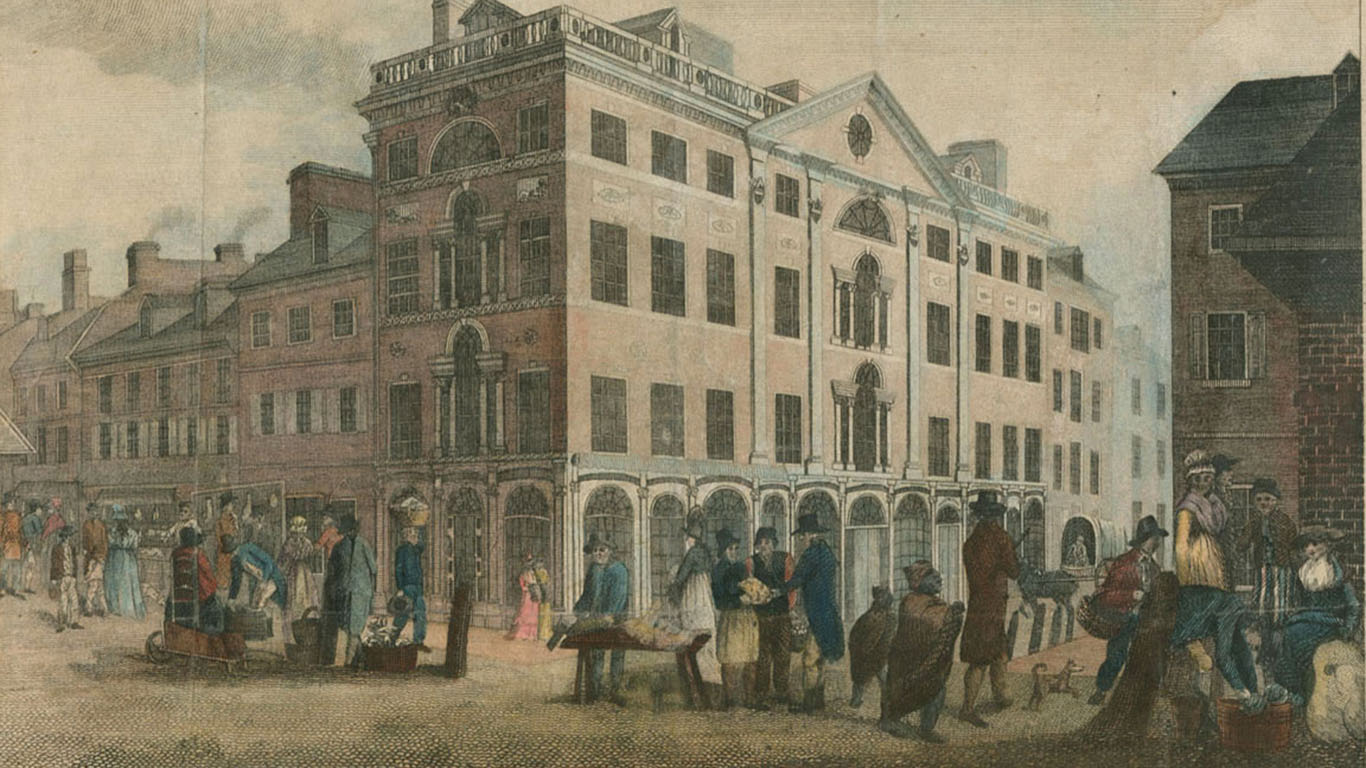I almost didn’t write this episode. The American Revolution in Philadelphia? Did I really have anything to add?
In the end, I realized that the Revolution was essential to understanding Philadelphia. It was truly a crucible moment. The British colonial city went through hell and emerged as the national capital of the newly federated United States of America in 1790.
But when you look at the Revolutionary period as it was seen from the streets, you begin to see what a messy time it was. This era is so often treated as a straightforward heroic tale. The underdog patriots beat the global imperial power of Great Britain against all odds. We still love to dissect the different arguments of the founding fathers as they hammered out the Constitution and the Bill of Rights.
But how was the Revolution impacting people on the street? There were a lot of people who did not have a seat at the table, working out the laws of the new nation. What did they have to say for themselves? That’s what this episode really is about.
If you’re interested in learning more about some of the stories you heard on the podcast, I have a few recommendations:
Quakers as Traitors
Richard Godbeer’s World of Trouble: A Philadelphia Quaker Family’s Journey through the American Revolution (2019) reveals the trials of the Drinker family during the American Revolution. They were conscientious objectors and merchants, caught in between the British and American Patriots. The Patriots feared that the Friends commitment to peace was just a cover for loyalist sympathies. The head of the family was imprisoned and sent away to Virginia, even as Philadelphians could hear cannons as the British approached the city. He left his wife and children alone to face the advancing British army. They were forced to provide quarters for British officers throughout the war without a male protector in the home.
Haitian Revolution in Philly
Gary Nash details the fascinating connections between Philadelphia and Haiti in “Reverberations of Haiti in the American North: Black Saint Dominguans in Philadelphia.” (You can find his article in Pennsylvania History: A Journal of Mid-Atlantic Studies, vol. 65, 1998, pp. 44–73, http://www.jstor.org/stable/27774161). Part of the growing Black population in Philadelphia in the 1790s was caused by white landowners in Haiti fleeing the Revolution, and finding refuge in Philly. This article brings to life many of the stories of enslaved Black Haitians who were brought to Philadelphia. Many of them were “freed” by Pennsylvania’s emancipation law, but unwittingly entered indentured servant contracts with their former enslavers, essentially ending their mobility.
Hucksters’ Rights are Women’s Rights
Candice Harrison helps us understand women hucksters in her article “‘Free Trade and Hucksters’ Rights!’ Envisioning Economic Democracy in the Early Republic.” (You can read it at The Pennsylvania Magazine of History and Biography, vol. 137, no. 2, 2013, pp. 147–77, https://doi.org/10.5215/pennmaghistbio.137.2.0147). This is a remarkable story built around a petition, which is preserved at the Historical Society of Pennsylvania. It’s so hard to find histories of women who lived and worked in the streets. Hucksters were a marginalized group of Black and white women (and some men, too) who had to work on the streets in order to make ends meet. While it’s amazing to have this document, it is clear that the women hucksters were capable of claiming their own rights, even when they were denied. These women refused to stop their work in the streets despite increasing pressure from the City.
Gallery
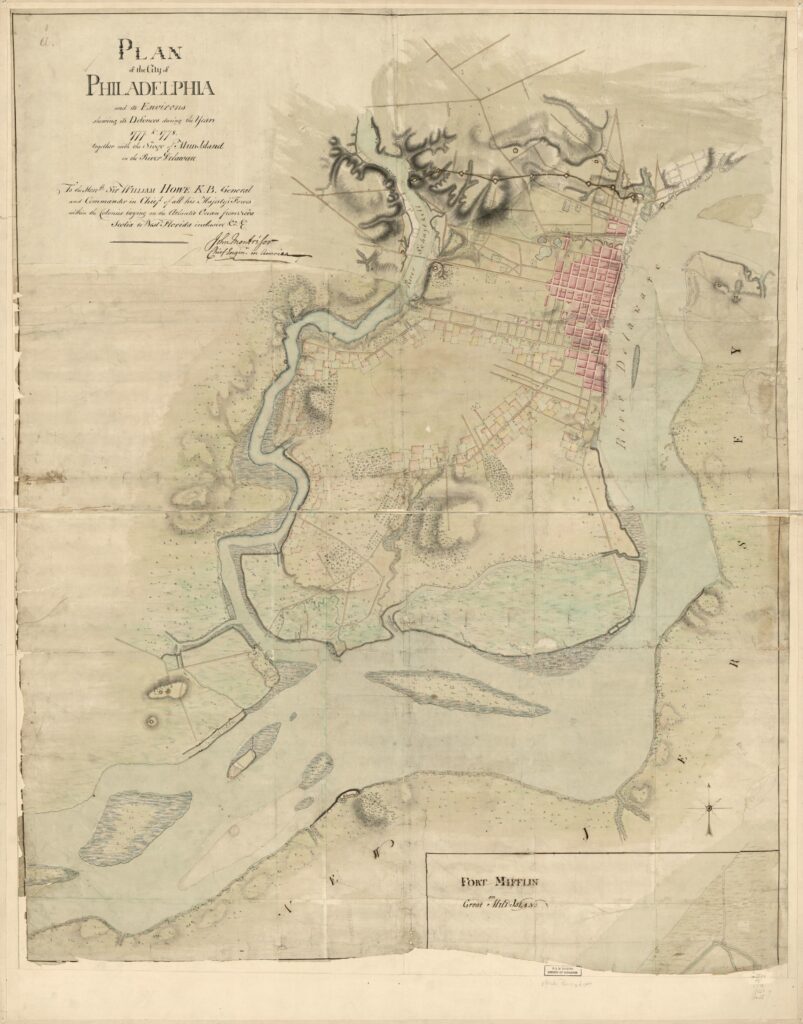
British plan of Philadelphia 1778
This is a phenomenal plan of the Philadelphia region and its landscape at the time of the American Revolution. You get a sense of how the city transitioned to countryside with cultivated fields, a few remaining forests, and marshy wetlands. (Library of Congress)
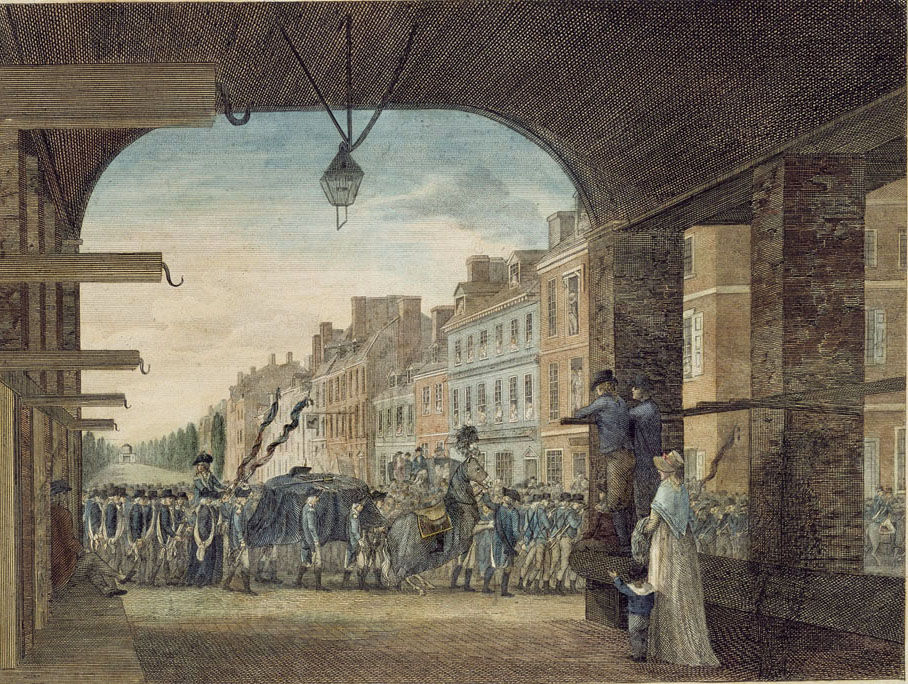
William Birch “Procession in the Commemoration of the Death of General George Washington, December 26, 1799
This view shows the formal political parades of the 1790s as seen from the public markets on High (now Market) Street. The viewer is facing west, and beyond where the city buildings end, around 7th Street, you can see the waterworks at Central Square (now City Hall).
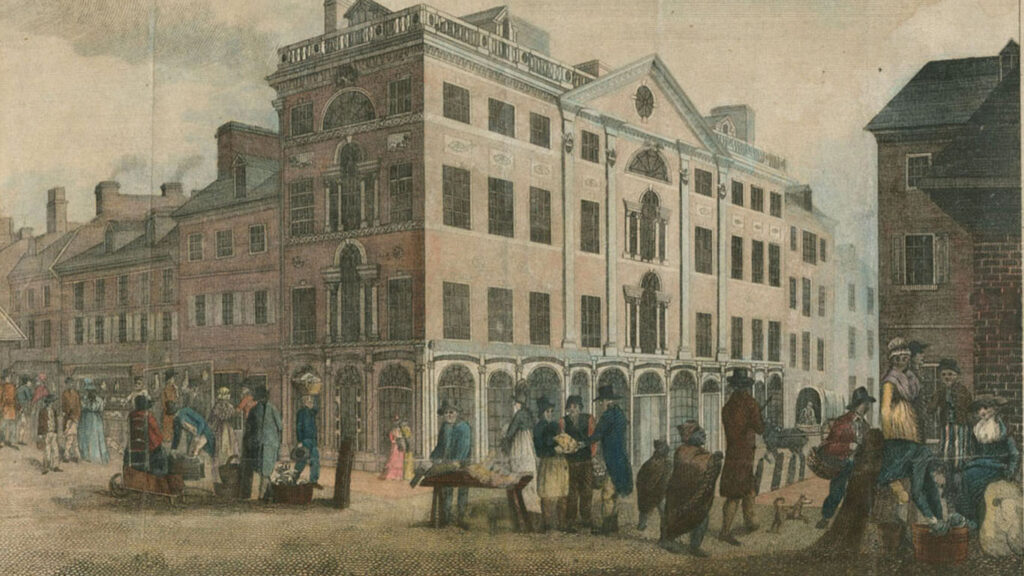
William Birch “SE Corner of 3rd and High Street” 1799
The public markets are just to the left of this view. Birch captures the informal hucksters and sellers who gathered outside of the market in the streets of Philadelphia.

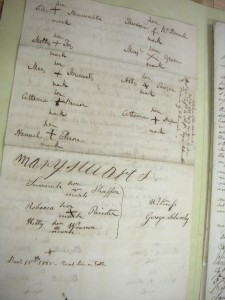
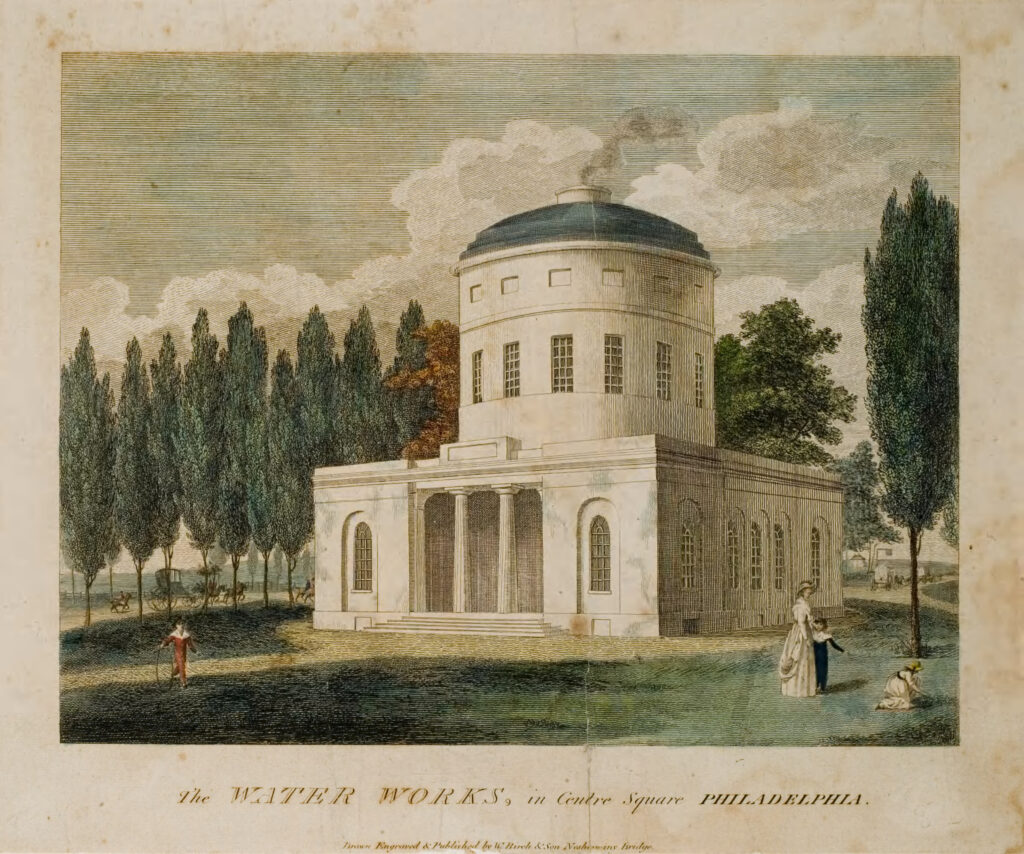

Sources
Allinson, Edward P. and Boies Penrose. Philadelphia 1681-1887: a History of Municipal Development. Baltimore, Publication Agency of the Johns Hopkins University. Allen, Lane & Scott, 1887.
Brissot De Warville, J.-P. New travels in the United States of America. Performed in. trans by Barlow, Joel, Lator [Dublin, Printed by W. Corbet, for P. Byrne, A. Gueber et, 1792] Pdf. Retrieved from the Library of Congress, www.loc.gov/item/16012303/
Davis, Susan G. Parades and Power : Street Theatre In Nineteenth-century Philadelphia. Berkeley, Calif.: University of California Press, 1988.
Finger, Simon. The Contagious City : The Politics of Public Health in Early Philadelphia, Cornell University Press, 2012.
Godbeer, Richard. World of Trouble: A Philadelphia Quaker Family’s Journey through the American Revolution. Yale University Press, 2019.
Harrison, Candice L. “‘Free Trade and Hucksters’ Rights!’ Envisioning Economic Democracy in the Early Republic.” The Pennsylvania Magazine of History and Biography, vol. 137, no. 2, [The Historical Society of Pennsylvania, University of Pennsylvania Press], 2013, pp. 147–77, https://doi.org/10.5215/pennmaghistbio.137.2.0147.
Irvin, Benjamin H. “The Streets of Philadelphia: Crowds, Congress, and the Political Culture of Revolution, 1774-1783.” The Pennsylvania Magazine of History and Biography, vol. 129, no. 1, 2005, pp. 7–44. JSTOR, www.jstor.org/stable/20093763. Accessed 23 Feb. 2021.
Koschnik, Albrecht. “Political Conflict and Public Contest: Rituals of National Celebration in Philadelphia, 1788-1815.” The Pennsylvania Magazine of History and Biography, vol. 118, no. 3, 1994, pp. 209–48, http://www.jstor.org/stable/20092875. Accessed 14 May 2022.
Miller, Jacquelyn C. “The Wages of Blackness: African American Workers and the Meanings of Race during Philadelphia’s 1793 Yellow Fever Epidemic.” The Pennsylvania Magazine of History and Biography, vol. 129, no. 2, Historical Society of Pennsylvania, 2005, pp. 163–94, http://www.jstor.org/stable/20093783.
Nash, Gary B. First City: Philadelphia and the Forging of Historical Memory, University of Pennsylvania Press, 2006, http://www.jstor.org/stable/j.ctt3fj3c5.4.
Nash, Gary B. and Billy G. Smith. “The Population of Eighteenth Century Philadelphia.” Pennsylvania History, July 1975: 362-368.
Newman, Simon P. Parades and the Politics of the Street: Festive Culture in the Early American Republic. Philadelphia: University of Pennsylvania Press, 1999.
“Othar Turner and the Rising Star Fife & Drum Band: Ida Reed,” Alan Lomax Archive, Gravel Springs, MS, 1978. YouTube. Online at https://www.youtube.com/watch?v=Oyqf-jf2B_4.
Ratcliff, Donald. “The Right to Vote and the Rise of Democracy, 1787-1828.” Journal of the Early Republic, 33 (Summer 2013), 219-254.
Salinger, Sharon V. “‘Send No More Women’: Female Servants in Eighteenth-Century Philadelphia.” The Pennsylvania Magazine of History and Biography, vol. 107, no. 1, Historical Society of Pennsylvania, 1983, pp. 29–48, http://www.jstor.org/stable/20091738.
Salinger, Sharon V. “Spaces, inside and Outside, in Eighteenth-Century Philadelphia.” The Journal of Interdisciplinary History, vol. 26, no. 1, The MIT Press, 1995, pp. 1–31, https://doi.org/10.2307/205547.
Scharf, J. Thomas. History of Philadelphia, 1609-1884. Michigan: L.H. Everts, 1884.
Shankman, Andrew. “Malcontents and Tertium Quids: The Battle to Define Democracy in Jeffersonian Philadelphia.” Journal of the Early Republic, vol. 19, no. 1, [University of Pennsylvania Press, Society for Historians of the Early American Republic], 1999, pp. 43–72, https://doi.org/10.2307/3124922.
Sivits, Paul, and Billy G. Smith. “Philadelphia and Its People in Maps: 1790s.” The Encyclopedia of Greater Philadelphia Website, 2012. https://philadelphiaencyclopedia.org/archive/philadelphia-and-its-people-in-maps-the-1790s/#4091
Smith, Billy G. “Death and Life in a Colonial Immigrant City: A Demographic Analysis of Philadelphia.” The Journal of Economic History, vol. 37, no. 4, Cambridge University Press, 1977, pp. 863–89, http://www.jstor.org/stable/2119346.
Smith, Billy G. “Inequality in Late Colonial Philadelphia: A Note on Its Nature and Growth.” The William and Mary Quarterly, vol. 41, no. 4, Omohundro Institute of Early American History and Culture, 1984, pp. 629–45, https://doi.org/10.2307/1919157.
Smith, Billy G. “The Material Lives of Laboring Philadelphians, 1750 to 1800.” The William and Mary Quarterly, vol. 38, no. 2, Omohundro Institute of Early American History and Culture, 1981, pp. 164–202, https://doi.org/10.2307/1918774.
Smith, Carl. City Water, City Life : Water and the Infrastructure of Ideas in Urbanizing Philadelphia, Boston, and Chicago. University of Chicago Press, 2013.
Snead, James E., Erickson, Clark L., and Darling, J. Andrew, eds. Landscapes of Movement : Trails, Paths, and Roads in Anthropological Perspective. Philadelphia: University of Pennsylvania Press, 2009. Accessed December 16, 2021. ProQuest Ebook Central.
Soderlund, Jean. “Colonial Philadelphia.” Encyclopedia of Philadelphia. 2017. https://philadelphiaencyclopedia.org/archive/colonial-philadelphia/
The Statutes at Large of Pennsylvania from 1682-1801. Compiled Under the Authority of the Act of May 19, 1887. United States, State Printer, 1896.
Warner, Sam Bass. The Private City: Philadelphia in Three Periods of Its Growth. Philadelphia, PA: University of Philadelphia Press, 1968.
Weld, Isaac. Travels through the states of North America, and the provinces of Upper and Lower Canada during the years , 1796, and 1797. London: Printed for John Stockdale, 1807. Pdf. Retrieved from the Library of Congress, www.loc.gov/item/17013770/.
Zallen, Jeremy. American Lucifers: The Dark History of Artificial Light, 1750–1865. University of North Carolina Press, 2019, http://www.jstor.org/stable/10.5149/9781469653341_zallen.
